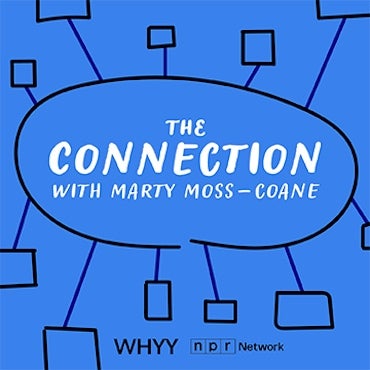Coal’s comeback
Pennsylvania is leading the way in changing the face of coal – trying to make it greener and cheaper. WHYY takes an in-depth look at Pennsylvania’s role in the science behind clean coal, coal-to-liquids, and other technologies. Stay tuned for continuing coverage through October.
WHYY’s senior science reporter Kerry Grens spends three days in Pittsburgh – mining Pennsylvania’s labs for the latest in coal research. WHYY’s special reporting on coal continues through October.
Trying it out – Wednesday October 1, 2008:
At the Pittsburgh coal conference this week, a major focus of the talks and presentations has been cleaning up coal by removing carbon dioxide emissions from coal-powered energy plants. As one presenter told me, carbon-free coal has been a pie-in-the-sky idea for years — but now it appears that companies are starting to make it a reality.
One presentation I saw involved an international team that is building a coal-powered electricity plant in Australia. Rather than allowing carbon dioxide emissions to get into the atmosphere when the coal is burned, the plant will capture the carbon and ship it over to a site 220 km away and pump the carbon into the ground for permanent storage. The speaker said he expects to see the plant in operation by 2017, which could make it the first of its kind in the world.
The goal of the Australian project, called ZeroGen, is actually to remove 75% of the carbon dioxide that would normally go into the atmosphere. The US Department of Energy’s plan is to have a similar plant in operation within the next 20-30 years with about 90% of the carbon dioxide removed. The government is willing to invest half the money it would take to build a demonstration plant here in the US, under a stalled program called FutureGen – which is now gearing up for a new version. Applications for companies to participate are due next week. But one of the concerns with FutureGen and all clean coal projects are company jitters over the billions of dollars involved in building such a demonstration, and as this morning’s speaker called “fear and loathing in the board room.”
Making coal an economic and environmentally friendly alternative to oil – Tuesday September 30, 2008:
Kerry speaks with Dave Heller from the International Pittsburgh Coal Conference in Pennsylvania
Listen:
[audio:sci20080930cleancoal.mp3]
Coal’s struggle to go green – Tuesday September 30, 2008
Nestled into a hilly, forested campus, the Department of Energy’s National Energy Technology Laboratory (NETL) appears modest for its robust budget: hundreds of millions of dollars each year, invested in research and development of fossil fuels. Much of that is sent to other NETL locations, and to fund non-governmental research, but there are a fair number of labs operating on the Pittsburgh campus. Monday I spent the afternoon on a tour of the coal labs. NETL invests – and has been investing for decades – an enormous effort into cleaning up coal energy. First it was soot, then the pollutants that contribute to acid rain, then mercury, and now, carbon dioxide.
WHYY is your source for fact-based, in-depth journalism and information. As a nonprofit organization, we rely on financial support from readers like you. Please give today.

